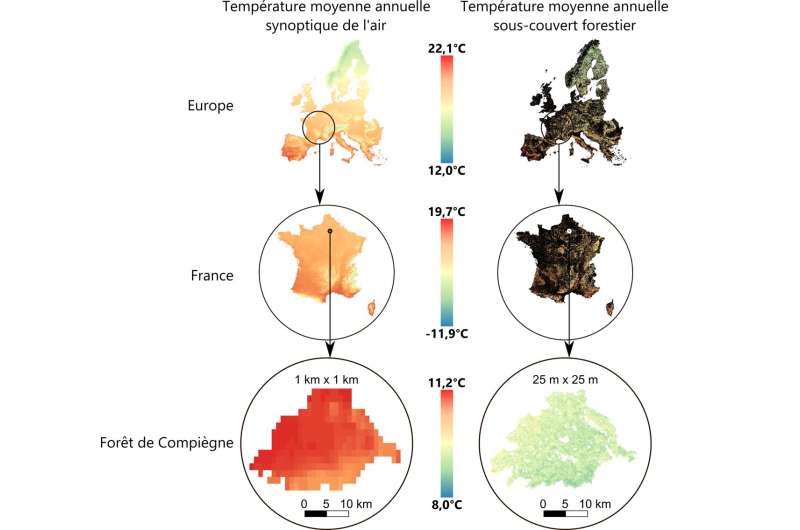First European map of the insulating effect of forests

To cool off in summer, there's nothing better than a walk in the woods. Trees act as a buffer that cools the air beneath their foliage in summer and warms it in winter. This phenomenon is caused not only by the protection that the forest canopy provides, but also by the transpiration of trees in summer: trees absorb cooler water from the soil, and this water is then transported up to the leaves, ending up in the atmosphere and thus cooling the surrounding air. The insulating effect of forests has now been mapped for the first time in Europe by an international research team, including a CNRS researcher.
Their work is published on October 4, 2021 in the journal Global Change Biology. To produce the map, scientists used a database that gathers together data from various temperature sensors around the world. By correlating the temperature readings with very accurate satellite imagery, they were able to map forest temperatures at unprecedented resolution. This revealed the insulating effect of trees, which on average cool the air by 2.1° C in summer and keep temperatures 2°C higher than that of the ambient air in winter. This insulating effect undeniably provides shelter for forest-dwelling wildlife. However, if droughts, human activity and storms continue to intensify in the future, the insulation provided by forests could be jeopardized, endangering these ecosystems.
To find out more about the database used by the scientists, which is called SoilTemp, go to and
More information: Stef Haesen et al, ForestTemp – sub-canopy microclimate temperatures of European forests, Global Change Biology (2021).
Journal information: Global Change Biology
Provided by CNRS


















